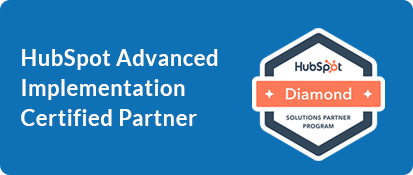Our Blogs
In today’s digital era, the business landscape has undergone a significant transformation. Today, customers have become more informed and expect personalized services from sales reps. Since sales play an important role in customer experience, AI prediction builders and other recommender systems appreciate investing time in exploring new products. AI tools can be leveraged by the sales team for making intelligent business decisions and tailor their strategies as per customer behavior and preferences while providing them with an enriching buying experience. It’s better to partner with a certified Salesforce consultant to make the most of these tools.

Mentioned below are some tools that can be leveraged to make the most of AI in Salesforce:
Effective Sales Strategies: Effective sales strategies should include reaching out to the prospects at the right time. This can be ensured by drawing meaningful insights regarding customer emotions from the customer data that is primarily available in an unstructured form such as emails, social media posts, sales meetings, and more. These insights, when combined, can be used to resolve issues regarding revenue, territory, competitors, and more. Tools such as Einstein Account insights and Einstein opportunity insights can be leveraged here.
Improved Lead Prioritization: Understanding need hierarchy and customer behavior are essential for accurate prediction of leads and modification of lead generation strategies. Salesforce algorithms work similarly, thereby allowing lead scoring models that are based on the following:
- Behavior Analysis: It helps in analyzing which customers’ are inclined towards the website pages. Apart from this, it also helps to know which pages are performing better.
- Company Details: Every detail beginning from recent mergers, leads, revenue, and other factors play an essential role.
- Engagement: Engagement is the attraction shown by your customers towards a product and at a specific frequency. For instance, a visitor subscribing to a newsletter shows their engagement with a product or service.
Better Insights: While Salesforce shows excellent efficiency in collecting structured data, it fails to efficiently collect unstructured data from emails, social media data, sales meetings, and calendar events. For gathering insights regarding customer behavior and preferences, activity data is significant. However, doing it manually can be time-consuming and would require many efforts. In fact, a considerable portion of time is spent researching, entering data, generating quotes with very little time spent on core selling. Salesforce engages Einstein Activity Capture to sync all the activities while managing time-consuming activities, ensuring higher productivity and sales.
Accurate Prediction: It becomes easy for the sales team to calculate the revenue that is expected to be generated by making use of AI tools. The calculations are done basis multiple factors such as customer’s shopping history, sales performance, and records. Einstein forecasting provides the sales team with real-time insights along with graphical representation.
Final Words:
To sum up, we can say that AI is no longer a future technology anticipated to bring revolutionary changes in every sector. It is already here and is benefitting every domain, including the e-commerce sector, where most customer interaction will be done through AI. With the provision of practical algorithms, innovative selling solutions, and all-inclusive analytics, AI can improve the decision-making of sales reps. It’s better to get in touch with one of the most experienced Salesforce consulting partners to know more about Salesforce AI tools and their benefits.

 +1-480-382-1320
+1-480-382-1320 +61-1300-332-888
+61-1300-332-888 +91 9811400594
+91 9811400594






